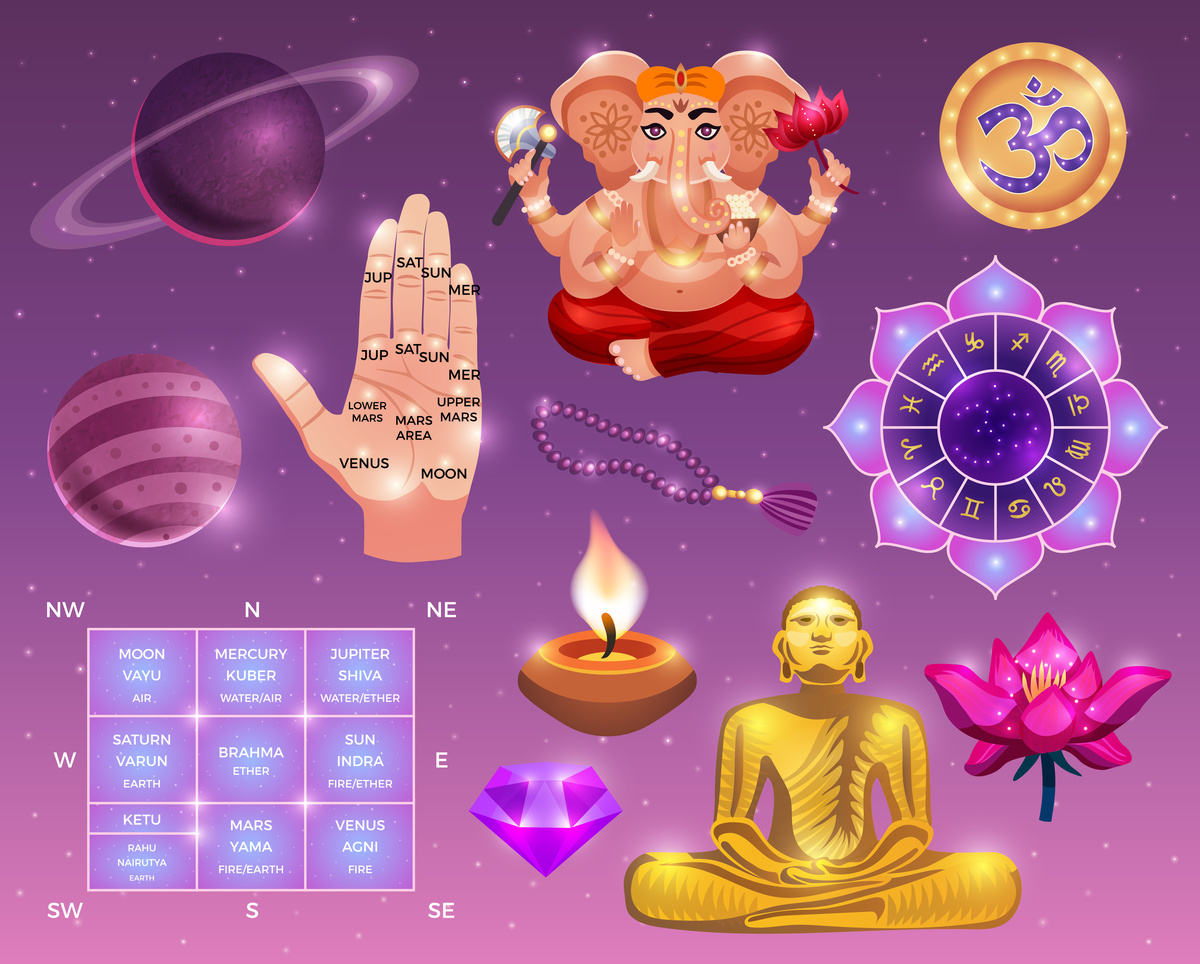Table of contents
What is the Vedic Birth Chart?

The Vedic astrological chart is the chart used in traditional Hindu astrology, known as Jyotisha. The word Jyotisha means light, associating with the light of the stars and the universe capable of illuminating a person's destiny towards self-knowledge.
In the West, it is more common to know Indian astrology by the name of Vedic astrology, a reference to the Vedas, an important set of sacred texts of Hinduism that include explanations about the stars and their influence in people's lives.
As with any birth chart, the Vedic birth chart works from a person's date of birth, offering much more detailed and accurate information than our Western horoscope.
In this article we will present various information regarding the Vedic Birth Chart, and how to interpret each detail. Check below what this method can tell you about your life.
Fundamentals of the Vedic Birth Chart

The Vedic chart is composed of several elements, each of which allows one to read a different aspect of a person's life. The most important elements of this chart include the Rasi (the twelve signs of the zodiac); the Nakshatras (the 27 or 28 lunar mansions); the Dasas (planetary periods that reveal the state of being); the Grahas (nine celestial bodies used in Vedic astrology) and the Bhavas (thetwelve houses of the astrological chart).
Below we will explain a little about how Vedic astrology works, how it is different from Western astrology, which most people are used to, and help you calculate your own Vedic birth chart!
How does Vedic astrology work?
As in any horoscope, the creation of your birth chart is the first step towards a reading. For this, it is necessary to inform the day, time and place of your birth. You should also pay attention to the changes that may occur in the construction of a chart by the South or North Indian methodology.
If this is the first time you come into contact with Vedic astrology, give preference to the Southern Vedic chart model, in which the reading is easier due to the fixed positioning of the signs.
The position of the planets (Grahas) decide what will happen to you in your life, while the movements of these planets (Dasas) indicate when these events are predestined to occur in your life.
Differences between Vedic and Western astrology
Although the two astrological charts are divided into twelve parts corresponding to each other, the Western method of measurement uses the tropical zodiac (in which the position of the sun is used for measuring the movement of the planets), whereas the Vedic chart uses the sidereal zodiac (which considers the position of the stars for measuring the movement of the planets).
Consequently, the constellations have a strong influence for the reading of the Vedic chart, which does not occur in the astrological chart that we are used to.
The second important difference between Vedic and Western astrology is the stars considered in chart reading. In Hindu astrology nine bodies are used, whereas in Western astrology ten heavenly bodies are used.
How to calculate your Vedic chart?
To calculate your Vedic chart, you have two options. One would be through consultation with a Vedic astrologer, who in addition to calculating your birth chart will also offer you a proper reading of your horoscope.
You can also calculate your Vedic chart through a website that does all the calculations for you. Among them, the best option to calculate your Vedic chart can be obtained by Drik Panchang.

